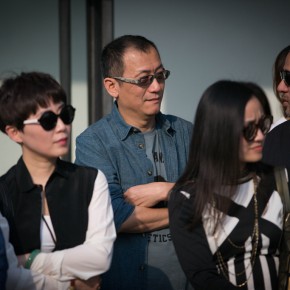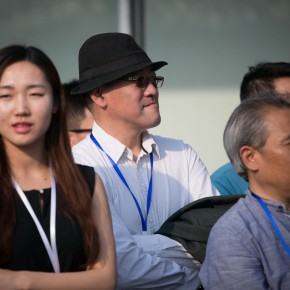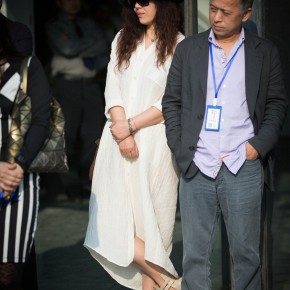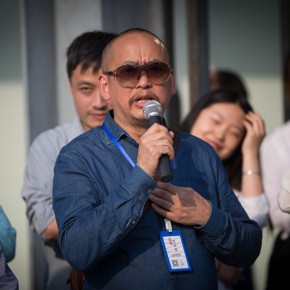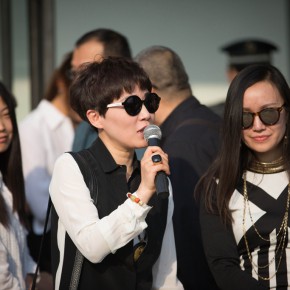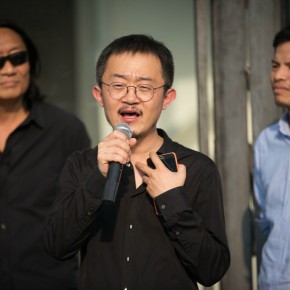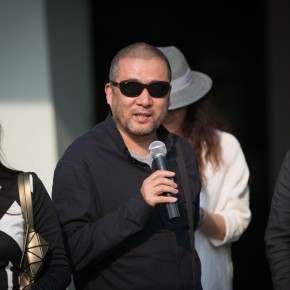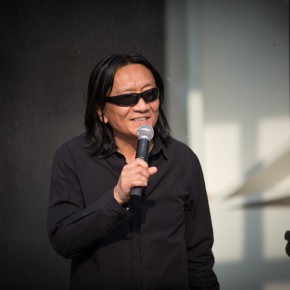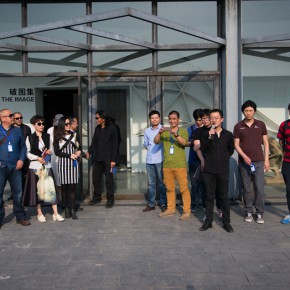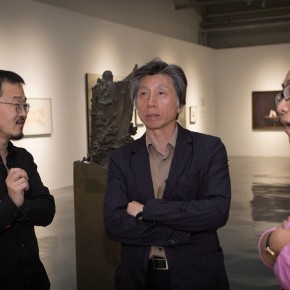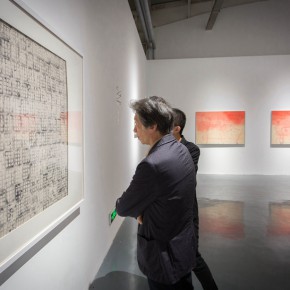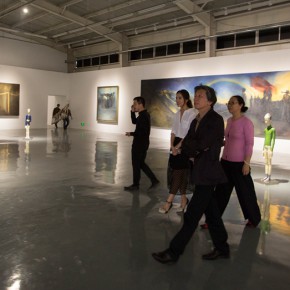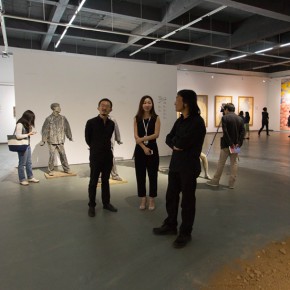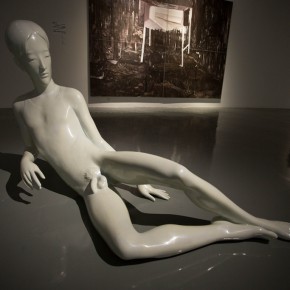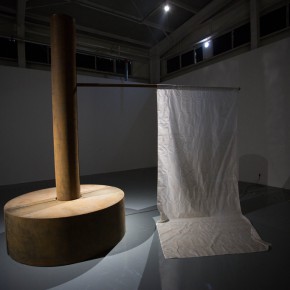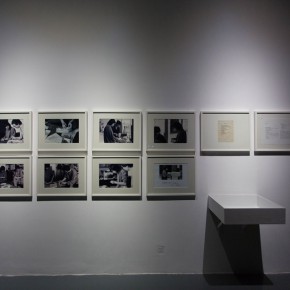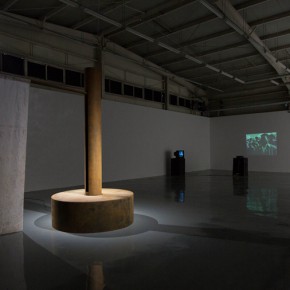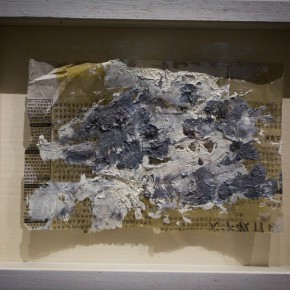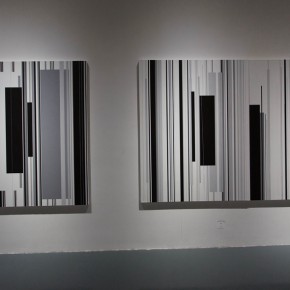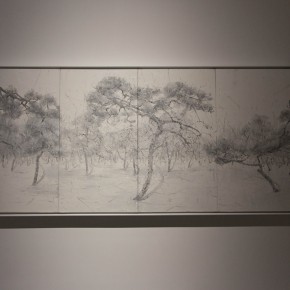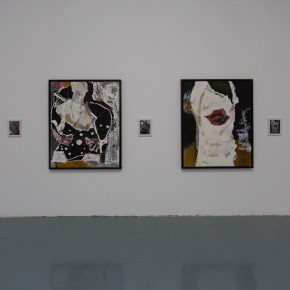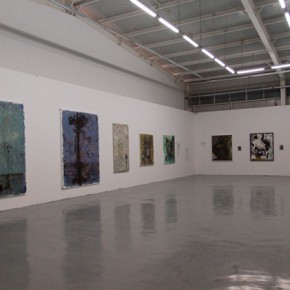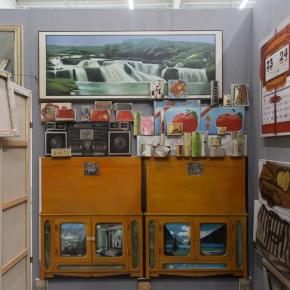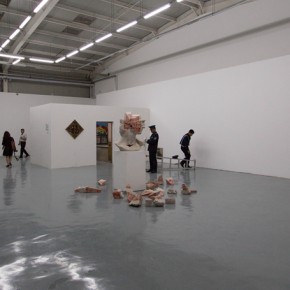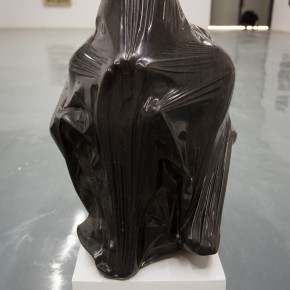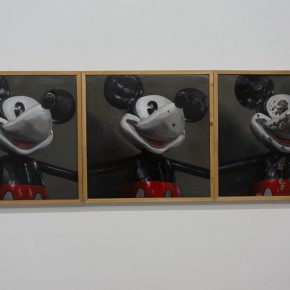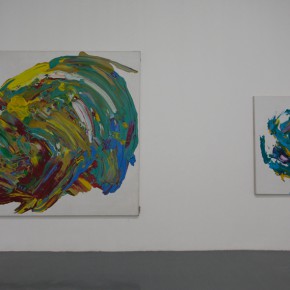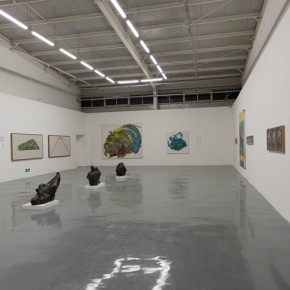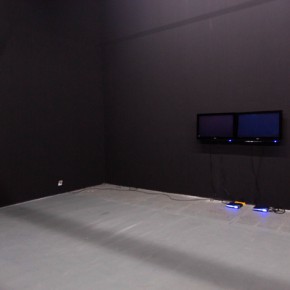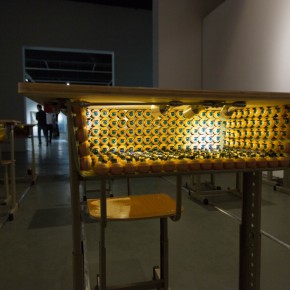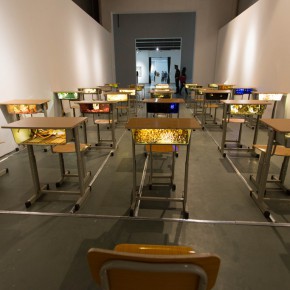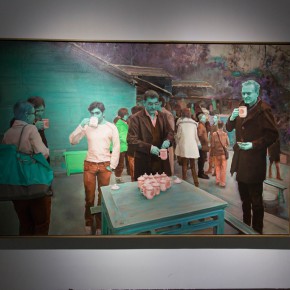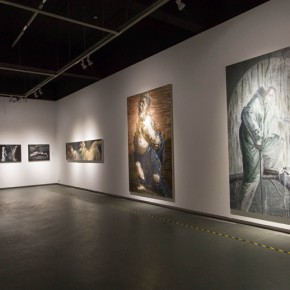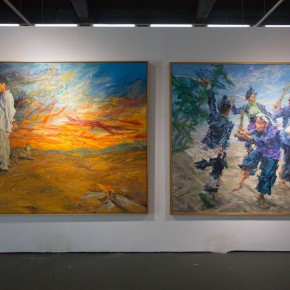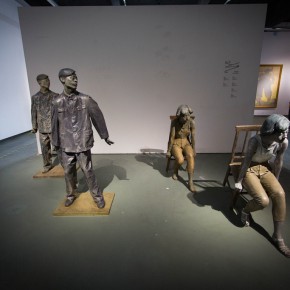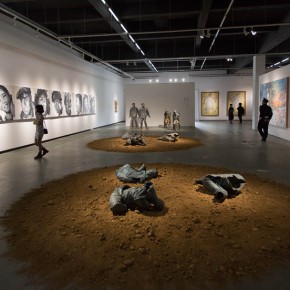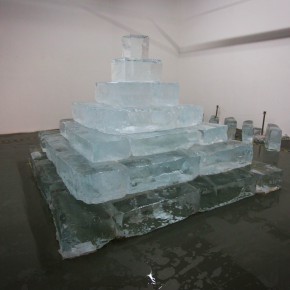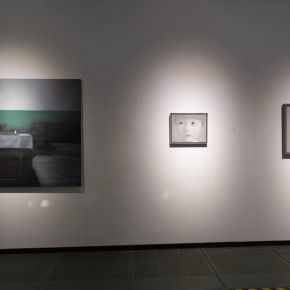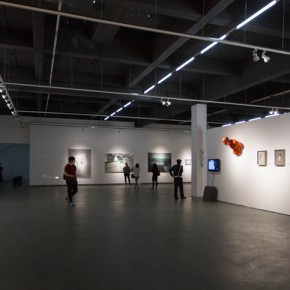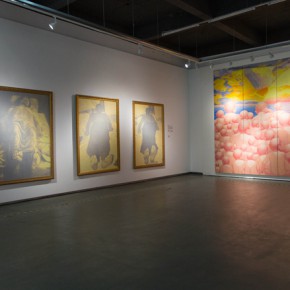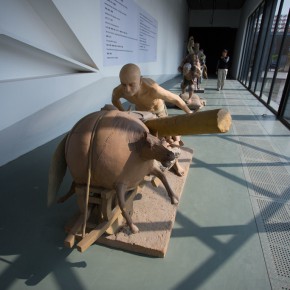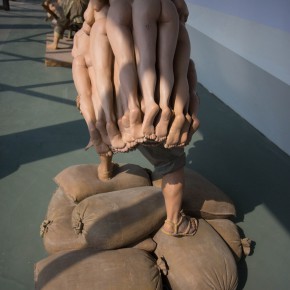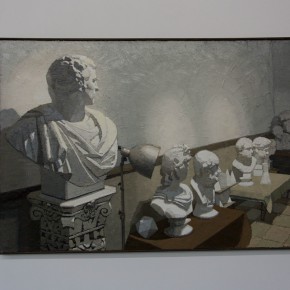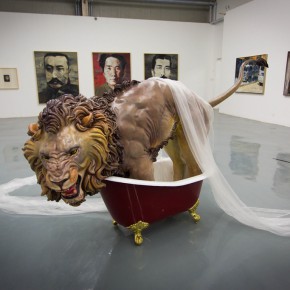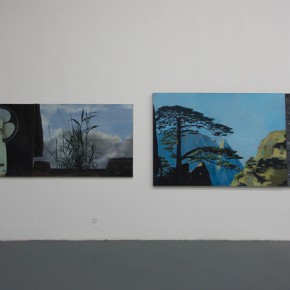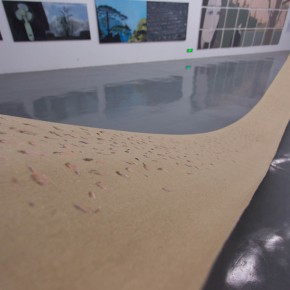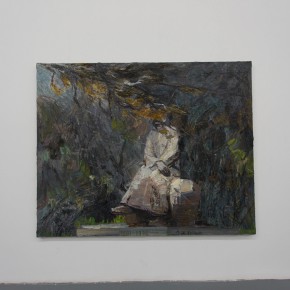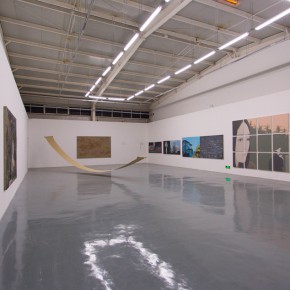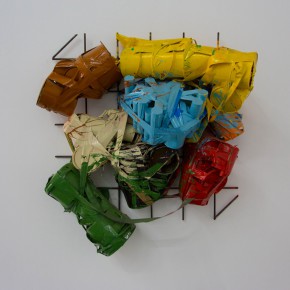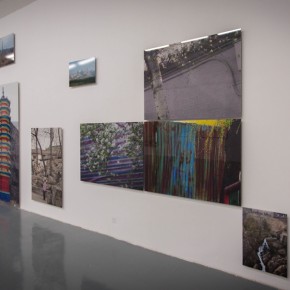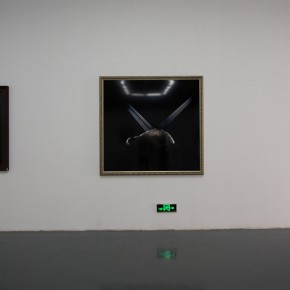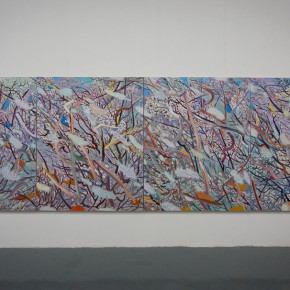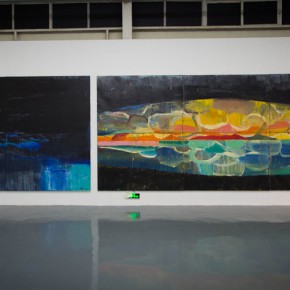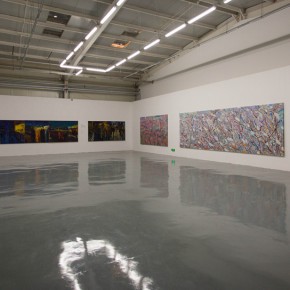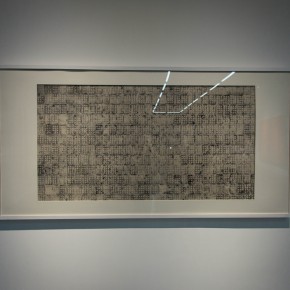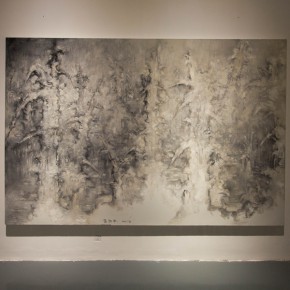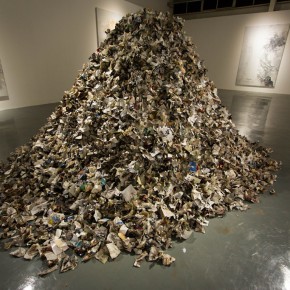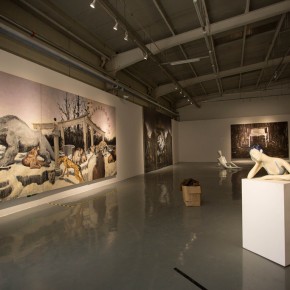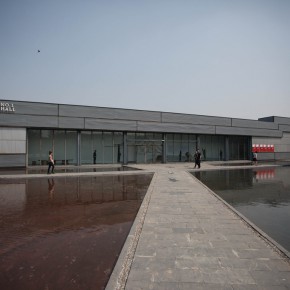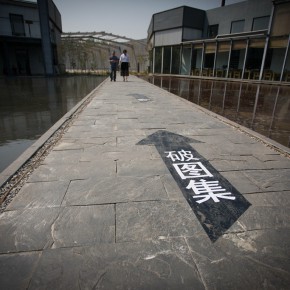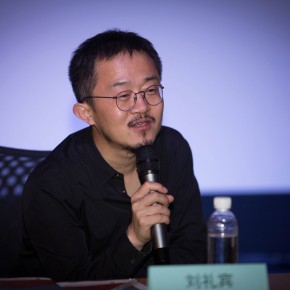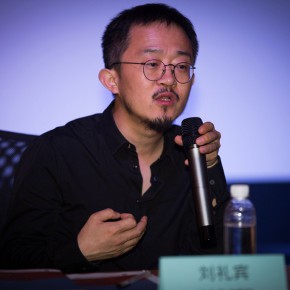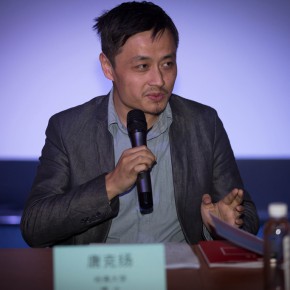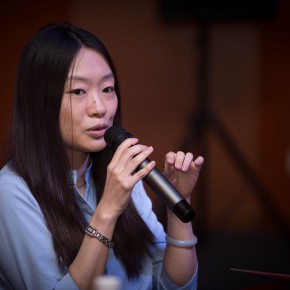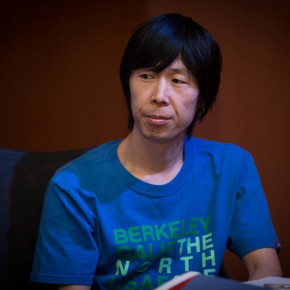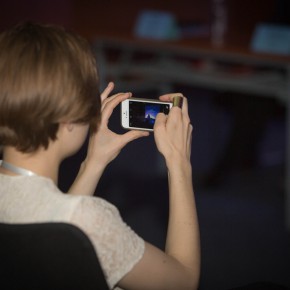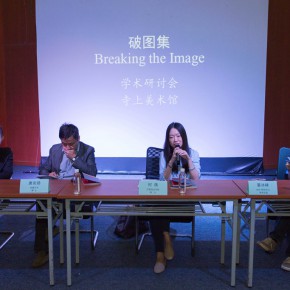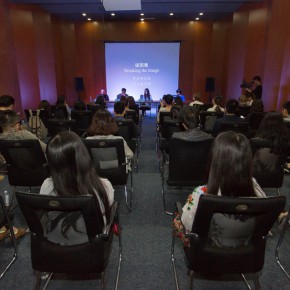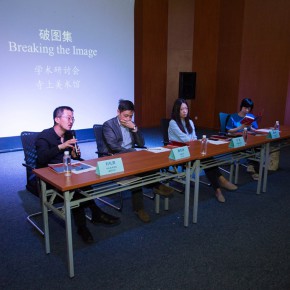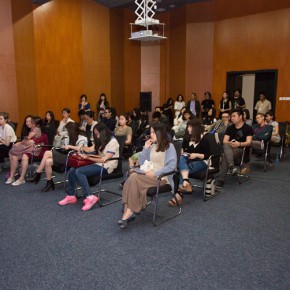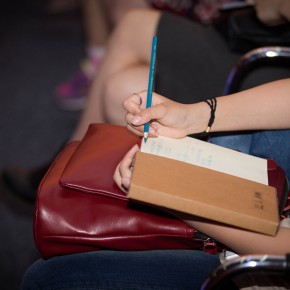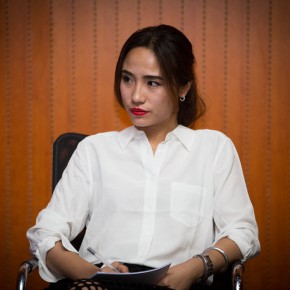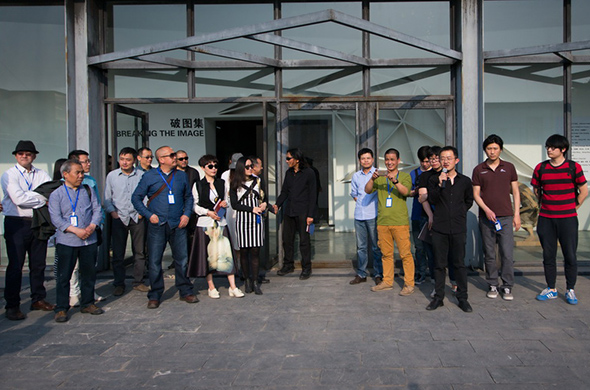
At 4:00 pm on April 26, 2015, “Breaking the Image” Group Exhibition of Contemporary Art opened at Sishang Art Museum. The exhibition is divided into 13 units, exhibiting 240 works by 62 artists, this is the biggest group exhibition of contemporary art since Sishang Art Museum opened. The exhibited works are presented at Hall 1 and Hall 2, while Empty Gallery Space for the Disciples of Richter as well as “More Than One and Half Tons” by Jiang Jie, which is on show at the same time, are located in Hall 3. “Breaking the Image” exhibition tries to comb through the methods of treatment of imagery by contemporary artists from China, and hopes to make use of the experience of the selected units to promote work in the entire area, to open up an opportunity for reviewing contemporary Chinese artists again.
The exhibition opened at 4:00 pm, and the opening ceremony was presided over by Linyao Kiki Liu, Executive Director of Sishang Art Museum, curator Liu Libin, together with the artists including Su Xinping, Zhang Xiaogang, Zhang Peili, Jiang Jie, Zhan Wang, Wang Huaxiang, Wang Shaojun, Chen Xi, Zhang Yanzi, Cui Xiuwen, Jiang Zhi, Tan Tian, etc., attended the opening ceremony. At the opening ceremony, Curator Liu Libin said, our interpretation of the Chinese artists was too “symbolic” at present, the exhibition aimed to attempt a new way of reading art, to discover more sparkles and valuein Chinese contemporary art. In addition, Fan Di’an, President of CAFA visited the exhibition ahead of the opening and congratulated everyone on the exhibition.
“Dialogue with Images”: Subject and Language
After China’s opening up, its art world encountered the pictorial bombardment of western artworks. At that time, one could find elegantly printed images (for example, in the 1980s, the Zhejiang Academy of Fine Arts’ collection of western art books and reference materials). Concurrently, the more fortunate were able to leave the country to see this art first hand. This transformed the fuzzy understanding of many works of art, clearing up misunderstandings surrounding these artistic forms. Of course, artists soon became aware of a certain kind of pressure, as faced with the splendid language of western painting, some chose to imitate, or unconsciously align themselves with these new forms. This led to criticism and subsequent denial by contemporary Chinese artists working during the 1980s. At the same time, another group of artists, inspired by ideas of self-consciousness, embarked on an endless journey in exploring artistic language.
Within the Chinese art world, “dialogue with images” has given rise to several important events: 1. The birth of Native soil realist paintings during the early 1980s; 2. The corresponding Hangzhou “Pool Society” artists’ criticism of the Sichuan Academy with their selection of flat painting techniques; 3. (Although the original intentions with the “Pool Society” differed) the “Northern Art Group’s” similar employment of cold, non-emotional brushwork; 4.The emanation of “emerging artists” as well as “political pop” artists during the early 1990s; 5. The popularity of “Richter’s flat painting techniques” at the turn of the Century, and concurrent solo exhibition held at the National Museum of Art in 2008; 6. “Li Songsong’s impasto technique” whose style is popular at the moment. Followed by the latter two, under a “deconstructionist” framework, a flood of various “approaches in simple misappropriation” included images of “Mao,” and “Marilyn Monroe,” both of which were often symbolically represented. 7. Around 2006, with the fourth generation of critics, who were beginning to debate this issue, sided with the notion of “the prosperity of abstract art.” But within less than ten years, we are grieved to discover that the majority of abstract art has become “decorative painting” or simply a “conceptual painting tool.” Despite the stimulating visit of Achille Bonito Olivia to China, the “abstract” is being prematurely over-drafted by the market.
Discussion on “Breaking the Image” in the first round
At 2:00 pm on the same day, discussions on “Breaking the Image” in the first round were held in the lecture room of Hall 1 in SiShang Art Museum. Curator Liu Libin, Dr. He Qian, Paris Institute of Political Studies, Dong Bingfeng, Academic Director of OCAT Research Center and Tang Keyang, Harvard University, had a discussion on “image”, artists’ identity, literature of art history, iconography, and so on.
About the origin and thinking of the exhibition, curator Liu Libin questioned this as follows: was it necessary for Chinese artists to echo the development context of the system of western aesthetics? Especially with the present upsurge of western masters to China, it was more important to reestablish the attitude of Chinese artists facing images. Through the display of 13 units, the exhibition showcases the trials of Chinese contemporary artists when they were faced with the ideological trends and aesthetics of western art, and attempt to separate Chinese contemporary art from the control of western discourse as much as possible, in order to showcase the exploration of “independency” of Chinese artists.
Dr. He Qian, Paris Institute of Political Studies interpreted the concept of “artist” from the perspective of sociology. Seen from the perspective of sociology, it was necessary to focus on the aspects of “how the artists treat their own identities”, “how the public treat artists”. In addition, the relationship between artists and the market, the relationship between artists and the system including academies, art museums, museums, the relationship between social success and art value were all concerned withthe sociology of art. He Qian pointed out that the west used their usual system to perceive Chinese contemporary art, and gave it the definition of “politicizing”, “symbolization”, but she believed that the applicable degree of this cognitive way was questionable.
In the world today, “image” is increasingly important for artists and art history, so contemporary art often discusses the problems such as how the images are constituted, presented and viewed. Dong Bingfeng, Academic Director of OCAT Research Center briefly introduced the ongoing work of OCAT collecting images and documents of art history, and he believed that it was similar to the topic of image which was discussed by “Breaking the Image”. In addition, Dong Bingfeng said that he hoped more artists participate in social life, participate in the process of thinking, instead of only being confined by producing images.
Finally, Tang Keyang, Harvard University, started from the exhibition, to talk about the concept of “image”.He said the participating artists of the “Breaking the Image” exhibition covered a great span of time, and each artist had a special understanding of image. But it should not try to clearly define the concept of “image”, which can bring more abundant possibilities.
About the Exhibition
Curator: Liu Libin
Opening Reception: at 4:00 pm on April 26, 2015
Duration: April 26 – July 13, 2015
Address: Sishang Art Museum, East Housi Rd., Zhangxizhuang, Shunyi Dist., Beijing
Coordinator: Linyao Kiki Liu
This exhibition is divided into thirteen units, exhibiting 240 works by 62 artists
1. Destroying the Image: Chen Danqing, Luo Zhongli (Documents Display)
2. Spreading You Thin: Zhang Peili, Geng Jianyi
3. Blade of an Era: Wang Guangyi, Shu Qun
4. Skin Tones: Zhan Wang, Zhang Xiaogang, Qi Zhilong, Wang Shaojun, Yu Fan, Cui Xiuwen, Li Zhanyang, Cao Hui, Lu Zhengyuan
5. The Laughing Mirror: Fang Lijun
6. Flowing River Current: Su Xinping, Yang Jinsong, Qin Qi, Shen Liang, Jiang Huajun, Luo Qi, XueFeng
7. Agitating the Surface: Li Songsong
8. Needles within the Seems: Jiang Zhi, Wang Guangle, Kang Jianfei, Chen Xi, Zhang Yanzi, Chen Yujun, Li Qing, He Jinwei, Song Yuanyuan, Li Yijia, Zhang Yexing, Wang Yu
9. Flesh Beneath the Skin: Sui Jianguo, Pang Maokun, Wang Huaxiang, Fan Bo, Tang Hui, Liang Shuo, Wu Didi, Qi Peng, Hu Qingyan, Diao Wei
10. Put Together: Wang Chuan, Xie Nanxing, Hang Chunhui, Wang Kai, Zhang Mengyuan, Tan Tian, Li Linlin, Liu Xia, Zhang Yufei.
11. Deceiving the Eyes: Hu Xiaoyuan, Dong Yuan
12. Anti-Image: XieDongming, Wang Keju, Liu Shangying, Shi Yu, Pei Yongmei
13. Inaccessible: The Disciples of Richter…(Empty Gallery Space)
Text by Yu Ya, Photo by Yang Yanyuan/CAFA ART INFO
Translated by Chen Peihua and edited by Sue/CAFA ART INFO


